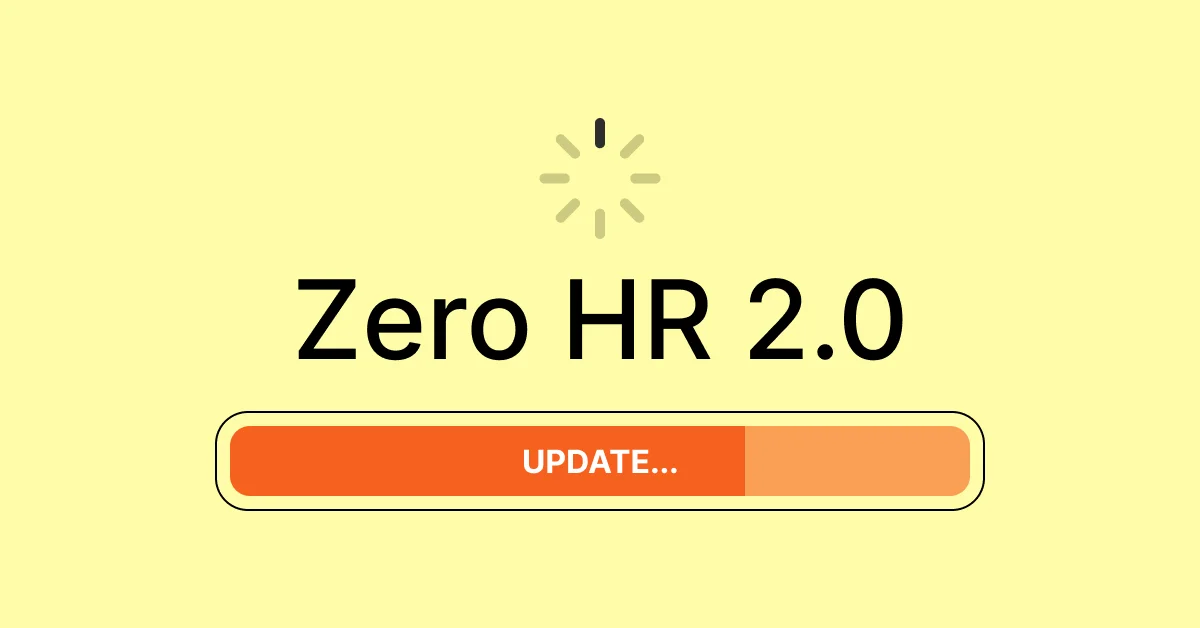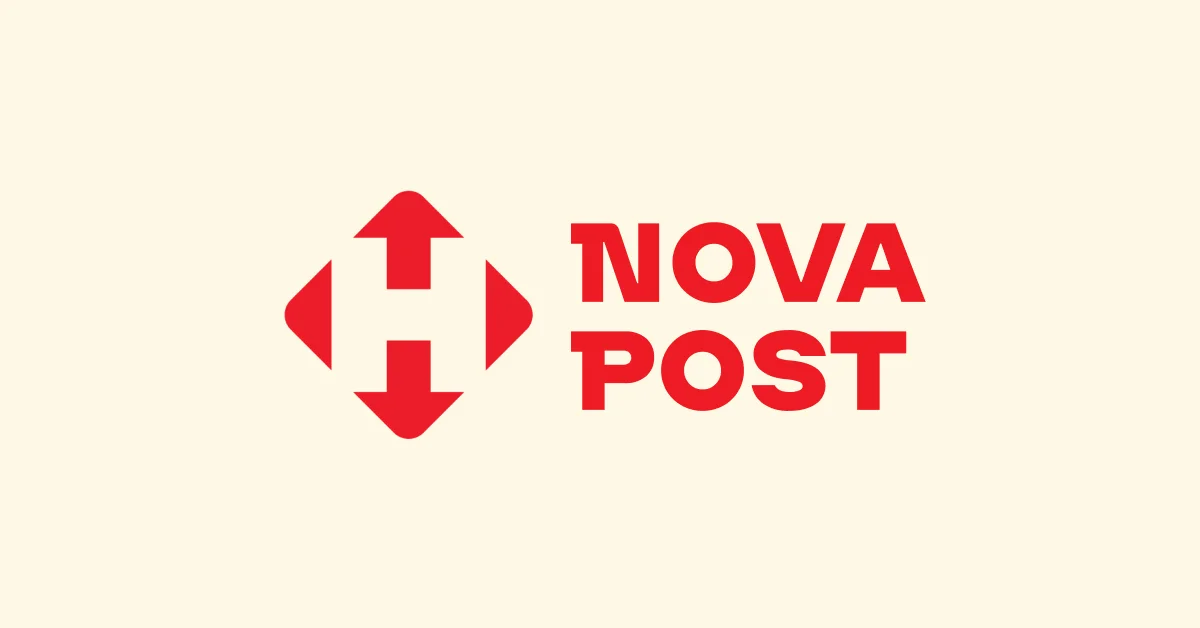At the end of July 2024, a forum was held that brought together experienced specialists in the field of human capital management. Talented HRs, CEOs and key creators of the Ukrainian and international business arena discussed new trends, innovative approaches and development tendencies in the HR industry, which is one of the fundamental plates of any company. The four main streams of the program covered all important aspects: from leadership in times of crisis to the implementation of innovative solutions in the HR technology sector.
Therefore, if you could not join this important event for the Ukrainian business community or did not have time to attend the speeches of all the speakers, that’s OK: we have prepared the quintessence of 5 key tips for HRs voiced at the forum.
Upgrade of the Zero HR concept to Zero HR 2.0

Long-time market players who have gone through more than one transformation to maintain leadership and scale their businesses know from experience that the traditional HR model was effective for many years, but not today! The fact is that the traditional approach was focused on the centralization of HR department functions, strict procedural approaches, top-down management and a clear hierarchical structure. In this paradigm, HR was more about administration than about people. Therefore, to solve new challenges, the Zero HR concept came to replace it. According to its principle, personnel management is carried out directly by line managers or through the self-management of teams. Zero HR has become a kind of level-up for companies that have set new rules for the game:
- Employee autonomy – now specialists independently make decisions on the vector of their development, training, as well as wishes and criteria for the selection of new members for their teams.
- Decentralization of management – full or partial responsibility for traditional HR functions such as recruitment, development, motivation, etc., now passes into the hands of teams or managers who better understand the needs of their employees. At the same time, the role of HR evolves – they become consultants in these, sometimes difficult, relationships. HR focuses its expertise on strategic support and partnership, ensuring consistency and efficiency in the work of all levels of the organization. They can now focus on developing corporate culture, forming an employer brand and supporting organizational change.
- Self-organization – teams can independently organize their work processes: define goals and decide how to achieve them and what methods to use for this.
- Focus on the company’s goal – HR processes such as performance reviews, recruitment or training are now closely linked to the strategic goals and results of the company.
- Digitalization and automation: the Zero HR concept requires the implementation of modern technologies to create an organizational structure that contributes to the effective functioning of all the above principles.
If we highlight the main advantages of this concept, then autonomy helps to increase the motivation and involvement of employees, since they feel important and trusted by the company. Thus, low- and middle-level managers receive significant management competencies, which contributes to the nurturing of leaders who will be able to take responsibility for new challenges at the right time. Such decentralization of processes allows for faster decision-making, which is important for risk management in the context of dynamic market changes. In addition, the Zero HR model helps to reduce the company’s costs through the implementation of automated solutions. After all, thanks to the extensive functionality of new technologies, even a small HR department can effectively cope with such a volume of tasks that previously only a huge staff of specialists could handle. Within the framework of this concept, HR shifts the emphasis from resource management to the creation of a favorable flexible environment in which clear values are defined, support and motivation mechanisms are developed, a reward system is in place, and communication policies are regulated. HR is no longer a link in the relationship between a manager and a subordinate: it teaches managers how to build effective relationships with their teams, shows the right path and provides “equipment” – tools with which employees must go through this path themselves, gaining invaluable experience.
However, the present is a time of risks and uncertainties that arise unexpectedly and develop rapidly. It is the ability of businesses to respond to such challenges and resist them that affects the ability of employers to ensure stable well-being for their employees, and therefore society. However, according to a, 73% of HR leaders note that their managers are not “savvy” enough to manage change. But the realities of Ukraine are even more severe: a full-scale war, personnel shortages, population migration, mobilization, etc. These additional factors require even greater flexibility and more effective solutions from businesses to ensure change management skills. Therefore, companies that have previously switched to the Zero HR concept should already be moving towards upgrading to the Zero HR 2.0 version, which Andrii Lysenko, HR Business Partner in SMART business, spoke about in more detail.
Zero HR 2.0 should be viewed as a transformation of HR functions through the improvement of self-service approaches due to automation and digitalization of processes. Let’s consider the key elements of such an upgrade:
- Using automated systems to perform routine tasks, such as recruiting, onboarding, organizing the training and development process in the company, maintaining personnel records, processing vacation requests, processing time sheets, etc. Automation allows employees to switch from routine tasks and focus on strategic goals, which means they can respond more effectively to possible changes. At the same time, specialists do not run out of internal resources, meaning that your teams are less susceptible to burnout and employees remain motivated longer.
- Using AI for data analysis: for example, with the help of solutions with AI algorithms, you can quickly identify personnel gaps, high talent turnover or performance issues, and make quick and relevant decisions based on the data received. For example, SMART HCM & LMS has a wide range of tools for powerful analytics, allowing you to easily collect, analyze and visualize data that the system aggregates in an understandable “human” language. Thus, managers receive useful insights about their teams in just a few clicks.
- Using AI for forecasting: having access to accurate analytical data, you can make useful forecasts: make simulations of what the result of implementing a new training course will be, estimate the cost of opening departments and forming new teams when expanding the company. Or, say, calculate the financial costs of implementing benefits and who exactly will be interested in them.
- Smart chatbots are becoming another tool that provides instant access to information and company services at any time and from anywhere in the world. In addition, smart chatbots not only improve the user experience of employees, but also reduce the workload of HR specialists.
At the same time, people management control does not disappear but is implemented through modern solutions. But another Gartner study showed: 56% of human capital management specialists say that the tools they use do not meet modern requirements. This happens because the company management does not understand which product to choose for their technological strategies. SMART HCM & LMS from SMART business has tools for automating recruitment, onboarding, employee assessment, goal setting, training, organizing a self-service portal and covers the entire range of processes related to human capital.
All this allows HR specialists to grow into facilitators providing strategic support and autonomy to each employee. In this case, the team becomes an orchestra playing one symphony, but each performer is their own conductor. And if suddenly someone starts to play out of tune, the entire orchestra does not go into chaos, but all adjust their “play”, compensating for the lack of sound in the composition. Zero HR 2.0 is the construction of a unified HR ecosystem in which employees can independently manage their data, receive support and access to resources with the help of innovative tools without the need to involve HR specialists at each stage. As a result, many unnecessary formalities, actions and intermediaries are eliminated, which makes it possible to quickly anticipate risks, adapt to new conditions and maintain a high level of operational efficiency.
SMART HCM & LMS has all the necessary modules for building such a holistic and self-sufficient environment, and its implementation is the shortest path to the Zero HR 2.0 concept and building your teal organization!
HR marketing from inside

The following tips that we would like to highlight were devoted to HR marketing, namely the principle of “from the inside to the outside”. We share the main takeaways that should be considered by everyone who cares about building their own successful employer brand today.
You would agree that every company is, first and foremost, people. Therefore, HR marketing begins within the team and scales outward like waves from a stone thrown into the water. Thus, the more significant and valuable the role of the team is for the employer, the wider and more powerful the splash of information about the company itself will be. How can this be achieved? Here’s how:
- An environment where each employee feels significant: everything is important here, from a fair salary and social package to maintaining a healthy work-life balance. Stability and care for employees have become the foundation for forming a positive image of the company.
- “Live” presence: show the real life and culture of your company on your platforms, focusing on people rather than products. Modern candidates, having found a suitable vacancy, are guaranteed to surf the employer’s page on social networks. And if the company’s posts consist only of vacancies, products and services and there is not a single photo or message with people, the candidate will understand that for this employer, employees are far from priority. Be sincere and show who the people thanks to whom the company achieves its goals and success are. Post photos of employees on vacation together, corporate events, workdays, how they receive gifts. Talk about their professions, what else, in addition to their direct responsibilities, they do in the company and outside of it. This approach helps to build a transparent and trusting culture that attracts new talent.
- Develop personal brands of your experts: contribute to the development of personal brands of your specialists on the company’s platforms, because people from the inside are the best ambassadors of your brand. They can tell the audience that you can not only make money here, but also become part of a larger mission. Post interviews with your experts, talk about their professions, run a success story section, conduct live streams with career consultations. Allow specialists to demonstrate the strengths of your business through their own pages. This allows you to not only develop personal brands of employees, but also build trust and interest in the company and attract a diverse audience.
- Building an architecture of surveys and analysis of results is an important step in understanding the needs of employees. Regular surveys help collect valuable information about the level of satisfaction and allow managers to identify specific areas for improvement. Make sure that the surveys contain open questions, because the answers to them provide a deeper understanding of the situation. Use special methods, such as Q12, and automation systems. The self-service portal in SMART HCM & LMS includes tools for various formats of surveys, tests and assessments, which allows you to build an automated architecture of surveys and analysis of data from employees. This helps to optimize the process of determining what exactly can be changed to increase the loyalty of team members, so that they will further transmit their commitment to the brand around themselves.
- Communication with other employers, including competitors, opens up new opportunities for HR marketing and attracts different audiences. Brands should get out of the vacuum of their environment and collaborate. Posting other companies’ vacancies in your community may seem paradoxical, but in fact, it gives your brand value. After all, when partners or even competitors contact you to post vacancies on your platforms, this indicates the trust in the company and its authority in the labor market. This approach helps to create a positive image, as well as draw attention to your company as an active player that supports the market and contributes to the growth of business opportunities in general.
At the same time, experts note that your care for employees should not be a one-time occurrence, but a constant one, so that employees feel it 25th frame. You can hang billboards all over the city and bombard the entire network with advertising, but it is people who will communicate more about you as a brand!
Digitalization of HR to get ahead in the talent race

At the forum, much attention was paid to the digitalization of HR processes, which became a unifying factor for many topics. Here are several key HR areas where digitalization is a necessity in today’s market realities:
- Onboarding – the pandemic forced most companies around the world to reorganize their processes to suit the remote format. And now, when the problem was overcome, employees from different countries gradually began to return to office life. However, the war in Ukraine forced businesses to further evolve towards working “from home”.Digitalized onboarding allows candidates to integrate into the company without having to be physically present in the office, which is critical for the Ukrainian labor market. If the company’s onboarding is not digitalized and the candidate must go to the office, this can filter out a significant portion of talent. For example, people who are currently outside the country, or those who have chosen remote work for security or personal reasons, simply will not be able to join your team. This narrows the search geography and demonstrates the company’s inflexibility. The Onboarding module in SMART HCM & LMS helps companies develop their own strategy for remote integration of new candidates. This way, you will not only save time and resources, but also increase the level of satisfaction and loyalty of new employees, who will be more likely to choose you as an employer adapted to today’s needs.
- Training – access to training resources at any time and from any place allows employees to pass training at a convenient pace and format that meets their needs and schedule. Remote learning is relevant for companies with a wide branch network and a large staff of specialists. You would agree that organizing offline training or courses can stretch for months, and collecting feedback and results will take a lot of time. Another thing is when all the information is consolidated within a single digital environment, which means it is easier to collect, process and analyze it to obtain results, report and identify gaps to promptly adjust your training programs.
- Attracting young talents – the future of any company is youth, and it is not surprising that employers are interested in attracting young promising talents. But when a progressive specialist, accustomed to mobility and the fact that the world can be controlled in one click, receives a kilogram stack of papers to fill out manually, it makes them think: “Are my employer and I really on the same page? Will they not slow me down here?”.Ukrainian legislation has created all the conditions for electronic document management in 1-2 clicks. And this reduces the distance between the candidate and the company or the client and the business. After all, all contracts, forms and declarations can be filled out in a few minutes. To automate document management processes, SMART business offers its SmartPoint DMS solution, which will ensure a painless transition to electronic document management. Since most of the company’s products complement the Microsoft Dynamics 365 ERP system, consolidated management of HR, finance, sales, customer support and other business processes is ensured, and most importantly – within a single digital environment.
- Motivation and retention of personnel – digitalization offers many tools for motivating and retaining talent. For example, gamification allows you to create a system of rewards and achievements integrated into training processes or work tasks. For example, with the help of this module in SMART HCM & LMS, you can set up special “badges” issued for achieving certain goals: completing courses, trainings or fulfilling KPI`s. Employees can compete for reaching a certain level or scoring points. In addition, the company can introduce the exchange of earned currency for purchases in the corporate online shop, where they can buy branded products, additional days off and other benefits. Gamification increases motivation for learning and work, promotes healthy competition and turns routine duties into an exciting process.
The role of business in the reintegration of veterans – a challenge that no country in the modern world has ever faced

There are currently over 1.2 million registered veterans in Ukraine, and after the war their number may reach 6 million people, as reported by the Minister of Veterans Affairs. At the same time, about 70% of the defenders were officially employed, and half need and can return to civilian work. Veterans returning to civilian life after participating in hostilities face a number of challenges. Therefore, we propose to consider the key aspects of strategies, thanks to which Ukrainian business can contribute to the successful reintegration and adaptation of our soldiers today:
- Creating a safe environment – veterans face a variety of physical and psychological difficulties when returning to civilian society. Defenders may have hearing, vision, stress and other factors that determine the need for special working conditions:
- Arrangement of an adapted workspace – comfortable furniture and equipment, such as special chairs or keyboards. Make sure that work areas are inclusive, where all employees will feel comfortable,
- Arrangement of a “quiet space” and individual schedule – for employees who need to reduce stress factors, “quiet zones” will become a kind of oasis with fewer irritants. And choosing a comfortable schedule and pace of work will contribute to better adaptation,
- Ensuring privacy for employees who may experience stress from a large number of people.
- Personnel training – the company’s managers and HR specialists should be aware of how to build communication with veterans and convey this knowledge to other teams. This includes:
- Training for HR managers and managers with the involvement of psychologists who have experience in communicating with veterans or coaches who themselves participated in military operations,
- Integrating communication with veterans into work processes – develop instructions that will clearly indicate how the company builds communication to support its defenders, who is responsible for what in this chain.
- Providing medical and psychological care – upon returning from war, veterans may need specialized medical and psychological care – not only for a long time, but also on an ongoing basis. What a company can do:
- Healthcare insurance for veterans,
- Allocating a budget for the treatment and rehabilitation of the defenders,
- Psychological support, which consists of providing and organizing opportunities to visit a psychologist, coach or trainer,
- Involving experienced employees or veterans, who have already adapted and can share their experience as mentors,
- Coaching and consulting on professional development and transition to civilian life,
- Assessing the veterans’ skills and retraining them for new roles in the company.
- Practical aspects of support by the employer – this is the basis that the company must provide for defenders:
- Providing financial assistance – these are funds that will cover the costs of the adaptation period, or financial assistance until the first salary,
- Providing legal support – we have probably all heard, unfortunately, how after being wounded, defenders have to collect all the certificates, reports, signatures and all the other endless bureaucratic papers themselves. Therefore, legal support from an employer can make a veteran’s life much easier by speeding up the receipt of social payments or benefits.
- Support for veterans’ families is no less important, because these are the people who play a key role in your employees’ adaptation to civilian life. For defenders, family is the rear, where they recover and feel safe. Consider a program to support veterans’ families, which may also include psychological counseling and financial assistance.
It is worth noting that the employer should take care of adaptation not from the moment an employee returns from the war, but also at the mobilization stage – when financial, psychological and legal support play an equally important role.
Reintegration of veterans into civilian life is a difficult and complex process, but businesses should feel their social responsibility for this, because thanks to our defenders, companies can keep their businesses operating.
Satisfying the hunger for personnel: the most “delicious” advice from experts!

Today, the topic of personnel hunger has become especially relevant for a number of reasons. The key ones are the migration of talent in search of better conditions, changes in the economy, such as the rapid development of the IT industry and technologies, which leads to an increased demand for specialists who are already in short supply in the market. Let’s add here the imbalance between education and market realities, the aging population and the war, which intensifies all the negative factors. Experts note: in order to satisfy the personnel hunger, the company itself must become “delicious” for candidates. Therefore, we are sharing with you the methods voiced at the forum on how a business can saturate the market with personnel.
- Creating a hot talent pool – in the flow of rapid changes in the competitive environment, it is important to always be one step ahead. A hot pool of candidates is a kind of bank of talented specialists with whom the company has established contact and maintains it. It is important not only to collect contacts of potential candidates, but also to regularly update this database and maintain constant communication with specialists.Attract candidates through different channels: social networks, professional events and open days. Segment the developed database by skill level, field of activity and geography of residence to quickly “recover” the necessary specialist from the pool in the future. Determine the frequency of updating your database, for example, every six months, and contact candidates to update their contacts, place of work, etc. At the same time, it is not necessary to do this directly: involve specialists in your projects, consultations. Make communication look lively and harmonious. And be sure to analyze how effectively your personnel pool helps fill vacancies. Identify its weak points and optimize processes.
- Digitalizing the system of communicating with the candidates – this includes the entire interaction cycle: automation of vacancy publication, integration of chatbots for initial communication with candidates, the ability to submit a CV in one click. Remember that today people prefer convenience and speed. Thanks to digitalization, you will be able to speed up communication, which means you will gain an advantage in intercepting valuable talent from competitors.
- Automated recruiting system – perhaps all recruiters are familiar with the situation of reaching the same candidates during a long search. Thus, new talents remain in the shadows, and perhaps among them is the one you are looking for! Automation of recruiting processes allows you to avoid wandering in circles, optimizing the process of searching and selecting candidates. Solutions that have integration with job sites, the use of AI and analytical tools help to more effectively select candidates for a certain role.
- Improving the conditions of internal referral programs – if referral programs do not bring sufficient results, they should be reviewed to improve the conditions. Reduce the time it takes to receive rewards, increase motivational bonuses, and try to introduce personalized benefits, having previously collected the wishes of your employees.
- Focus on attracting young talent – invest in programs aimed at students and graduates – and this will pay off over time. Collaborate with universities, offer internship and practical training programs. Support educational institutions by improving their material and technical base, this will contribute to the formation of high-quality specialists in the labor market, among whom will be your future candidates.
- Reskilling unpopular professions according to gender stereotypes – a study by the Confederation of Employers of Ukraine showed that the shortage of men among personnel led to the fact that enterprises began to attract more women to “male” professions to avoid the threat of a decrease in production volumes.As sad as it may sound, there are still positions in the labor market that are traditionally associated with a certain gender, but you must agree that this approach hinders the development of staff potential. Therefore, experts advise implementing reskilling initiatives that help people change their professional activities and adapt to new, or atypical for their gender, areas. Moreover, reskilling can be aimed at encouraging both women to take on “male” professions and men to take on “female” ones, which will only expand the company’s human resources base. Initiatives can be implemented through personnel retraining programs, additional courses, or employers’ assistance in obtaining a new education.
- Creating new professions – no relevant candidates in the market with experience in your local role? Create your own profession and train your own professional for it, meeting all your needs! This approach gives the company the opportunity to independently form the necessary human resources potential and helps to get rid of dependence on external factors.
Therefore, a company that can effectively manage its resources, attract and retain talent will always remain an “appetizing” employer in the labor market. And SMART HCM & LMS will help create a flexible and adaptive recruiting strategy that meets the requirements of the present. The system provides tools that help effectively solve the problems of personnel shortage, contribute to the saturation of the company with high-quality specialists and increase its competitiveness.
There were many more insights from leading experts, but the unifying leitmotif of almost every speech was process automation. It is this that is the global course for business, where your company is a ship, CEO and HR are captains, and SMART HCM & LMS are modern navigation devices that automate the management of the vessel in the ocean of opportunities. So, wait no more: take a course on automation now by ordering a consultation from SMART business experts!



